When Franci and I reached the age where we were reading a lot, my Dad supplied us with many adventure books. Specifically books that he felt had helped further his “sail around the world” dream. Willard Price’s Hal and Rodger series seemed to have played a big part. It was in one of those books, “Pacific” that I first heard of pearl divers. At that time I did not have the foggiest idea where the pacific was, but I knew they had pearls.
“Coral island” by R.M. Ballantyne also gave me a glimpse into the world of beaches, coconut trees and lagoons. (I just imagined the lagoons waaaaaaay too small!)
Nuku Hiva was our very first Pacific island. (Well, South Pacific island. I suppose the Galápagos are islands in the Pacific too.) But though Nuku Hiva was great, it lacked a key feature: clean water. Not that the water around Nuku Hiva is polluted – it’s just not clear.
We were all excited for our very first atoll. =)
Raroia
Looking back at our stay at Raroia it was jam-packed with excitement! The excitement of meeting Pacific fish life for the first time (other than mahi-mahi), Kon-Tiki island, pearls and celebrating Karin’s 15th birthday all featured in the busy week spent at our first atoll.
While we were in Nuku Hiva, we found out that the month of July is a festive month for the people of French Polynesia. They have inter-island dance competitions and a general festive air is adopted over the weekends.
We arrived at Raroia just before the weekend so on Saturday my Dad and Sophia went ashore to find out if there would be anything interesting happening in the tiny village on the main motu. (The islanders call the tiny sand-bar-like islands “motus”.)
They were not able to find out a whole lot, since everybody speaks either French or Polynesian. They did manage (through Google translate) to find out that there was to be some kind of sports event in the afternoon. After all six of us arrived on land, there didn’t seem to be much going on, so we walked down the village’s one street to the house of a very friendly local who had talked to my Dad and Sophia earlier. She was selling pearls!
On the opposite side of the atoll there is a pearl farm. I’m not at all sure how the logistics work, but the pearls this lady had to sell came from that farm.
Island life was vividly portrayed in that household. The island is tiny – not only does everyone know everyone else, but they probably know everyone on the next atoll over as well. There is very little sense of formality and clothes tend to be on the frayed side. A lot like when living on the boat, actually. It’s not that we don’t own nice clothes or that we don’t like dressing up. It’s just that there is no occasion. That, and the fact that you ARE going to be working with something that stains, so you might as well wear something old. It’s warm as well – a few extra holes help with ventilation. 😉
We were greeted with smiles and as soon as we made our intent clear, all was bustle to set up the tiny camping table on which to display the pearls.
The pearls were mostly dark – the better the quality, the lighter the colour and the rounder and smoother the pearl. There were a few loose pearls, but mostly they were set in earrings and necklaces. It was wonderful to take a smooth, dark pearl and hold it up to the light. There are many colours that shimmer under the surface.
In the end when we had decided on our purchases, all had to be photographed with the permit, in the event of any authorities doubting our claim to the pearls. (They are extremely strict on pearl trade in French Polynesia.)
Shopping done, we wandered around the motu. There is one road running almost the length of the village and ends up at the airport. Actually no, it’s not really an airport. It’s more like a runway with a big, open shed to one side.
When we were there the little office was locked and a few construction cones huddled around a mobile staircase. You could walk all the way down the empty expanse of runway if you so wished, but it was hot.
The sports event, we later found out, was extremely low-key. There were a bunch of people standing around, but mostly waiting for something to happen while the main competitors ran about the island with coconuts, so we didn’t see much of them.
We as yachties were, of course, extremely noticeable. They do get quite a few sailing boats there, so they didn’t make a fuss, but everybody still knows immediately that you are new. The people were very friendly and tried to answer our questions as best they could via Google Translate.
At one stage we tried interacting with the kids some. I asked my Dad for the tablet and all I was doing was having the kids spell out their names so I could have a better go at pronouncing them. There was one little girl that kept on trying to tell me something. A simple sentence that simply went right over my head. She must have been about seven or eight, so in the end I had her spell out on the translator what she was saying. After staring uncomprehendingly at the English for a while, (Google translate is great – it’s just not always very good with converting sentence structure . . . also I have no idea how well she could spell…), I finally understood that she wanted “to show me something”.
Once she had my attention, up she popped and tumbled head over heels into a cartwheel. Although not smooth, it was adorable and she was properly “ooh”ed and “aaah”ed afterward. To return the favour, I showed her how to get into a bridge from a standing position and, since I had just learned how to do this, I kicked my feet over my head. As soon as I was right way up again, she had me help her perform the same daring feat. Trusting me absolutely, she had me hold her going down into a bridge and then support her as she kicked her feet back over her head. Her playmate also had me repeat all the same steps again and and again. I rather overworked the French “voila!”, since my French vocabulary allowed for no other exclamations of affirmation.
At some stage we motored across the lagoon and anchored right off Kon Tiki island. (Another post will have to be made of that worthy destination, as I am focussing on pearls.)
Just a few motus South of Kon Tiki there is a pearl farm. We dinghied over to the pearl farm one afternoon and were delighted to find that we were recognised. That Saturday spent ashore we had spoken…well, communicated with a lady who had told us that she came from the other side of the atoll. And on the other side of the atoll she was indeed! Overseeing things at the pearl farm. ^_^
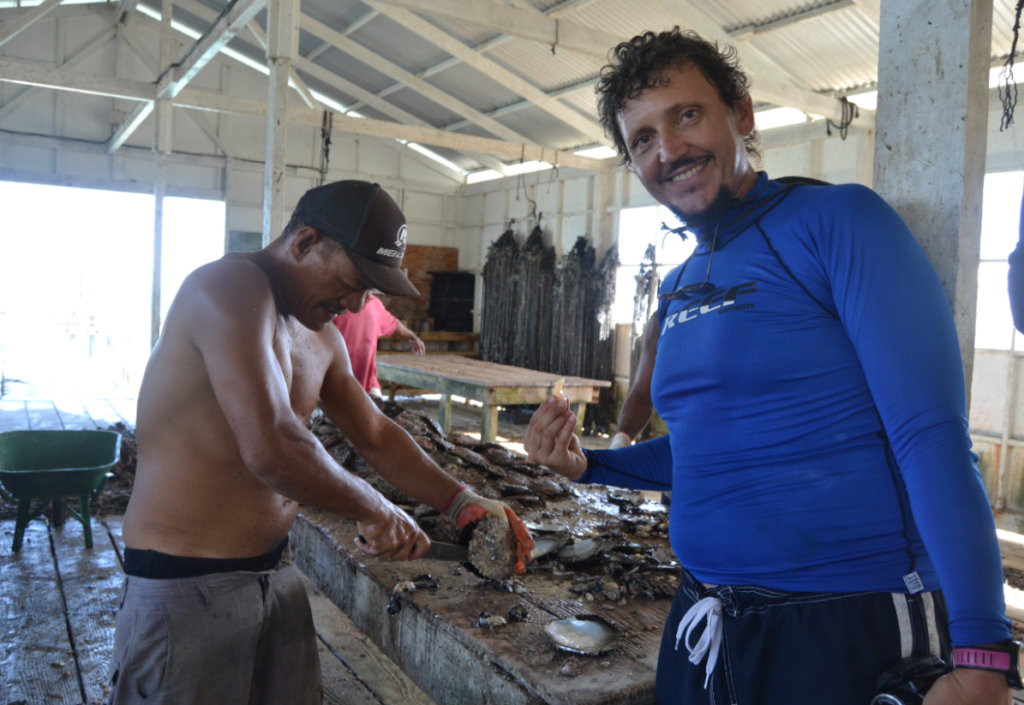
Most of the oysters cannot be re-seeded and are thrown out. They allowed my Dad to eat as much raw oyster as he wanted ^_^
We really struggled to ask any questions, even with the help of Google translate, but everyone remained super friendly and helpful, willing to show us what they were doing.
That afternoon they were seeding oysters. Oysters that had been growing in the comfort and safety of their enclosures up until the point where they were rudely pulled from the water and hauled into the big wet shed. In this big, wet shed, they are dumped on a processing table where there are one or two men with big rough tools. The men expertly tear off oysters from the clumps they had been growing in and then use their big, unwieldy looking tools to pry open the oyster’s tightly clamped shell and neatly insert an orange wedge in the slit. They work fast and it’s easy to see they’ve had a lot of practice.
The oysters that are wedged open get packed into crates and are then placed at the seeding stations. Each station had a person sitting before it with a series of very specialised tools which I will NOT endeavour to name, but will have to show you a photo of.
As each oyster takes its turn, it is placed in the clamp to firmly hold it in place. A new tool is inserted into the mouth of the oyster and the wedge removed, providing a clear view of the internal workings of that oyster. Using their special tools, the seeders will cut a tiny slit in the pearl pouch (as I have come to think of it) of the oyster. Into this comes the “seed” along with a bit of lining to help with the healing. The “seed” is a plastic ball, treated to be especially non-irritant to the oysters. This ball will then over time be coated with the lovely pearl shimmer.
It was very interesting to watch the process. After seeding an oyster, it would be dumped into another crate. Each oyster then gets a tiny little hole drilled through a ‘shell-only’ part of it and eventually gets strung up onto ropes with fishing lines. These ropes, lined with the seeded oysters, are put back into the water.
We were invited back for the following day – we were made to understand that in the morning, around 9o’clock they would be taking out pearls from the oysters.
That was a lot of fun! Seeing the way in which the oysters were seeded was very interesting, but seeing a pearl being taken out was enormously satisfying!
My mom baked some cookies to take along, just as a thank you for letting us wander around their shed. I think they went down very well. ^_^
The shed didn’t look any different in the morning – still big, full of noise and still wet. The stations were all nice and busy, crates were being hauled around. To see the difference you had to go stand right next to a seeder. Only now they weren’t seeders any more – now they were treasure seekers!
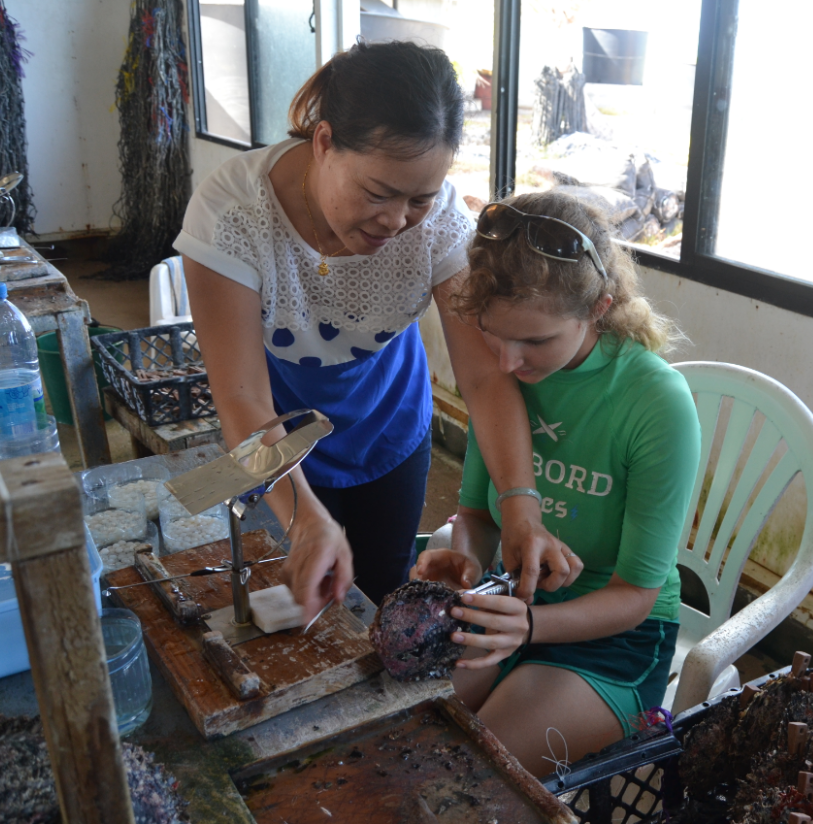
They were very kind to also allow us the chance of taking out some pearls. Here is Franci being helped – it’s much more tricky than it looks!
Most oysters have pearls in them, but not all of them. Some are empty, some only have a little rice-crispy-like fleck hidden inside. It’s fun to stand and watch. The treasure seeker positions his/her oyster, putting in the tongs well to the side of the oyster’s lips to have maximum visual of what’s inside. Then comes the careful prodding of the pearl sack. Is there something inside? A pearl will show up with a big bump. A slit is then made into the sack and carefully the pearl is extracted with the funny cup tool.
They even let us have a go! (We took a LOT longer than they did though!)

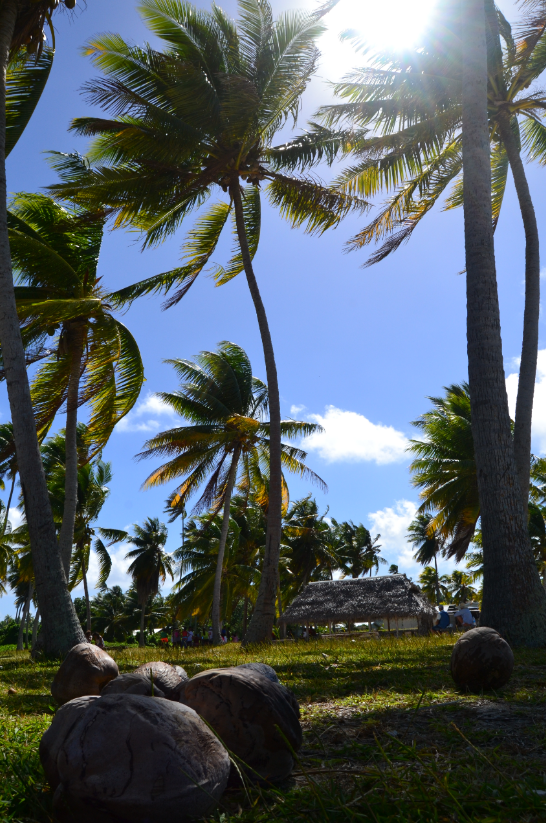
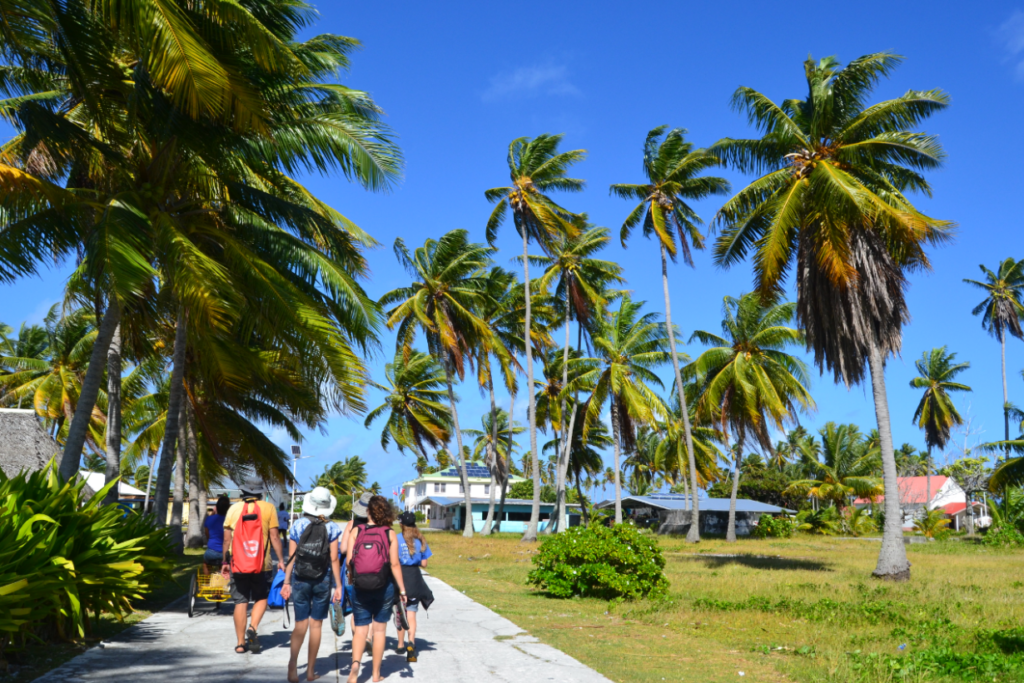
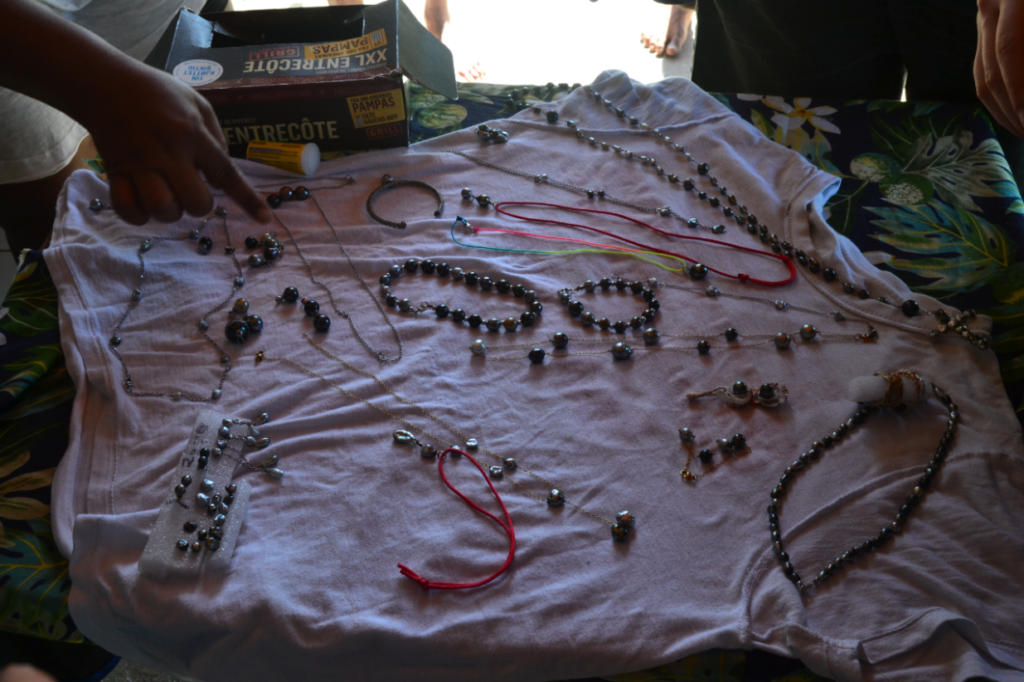
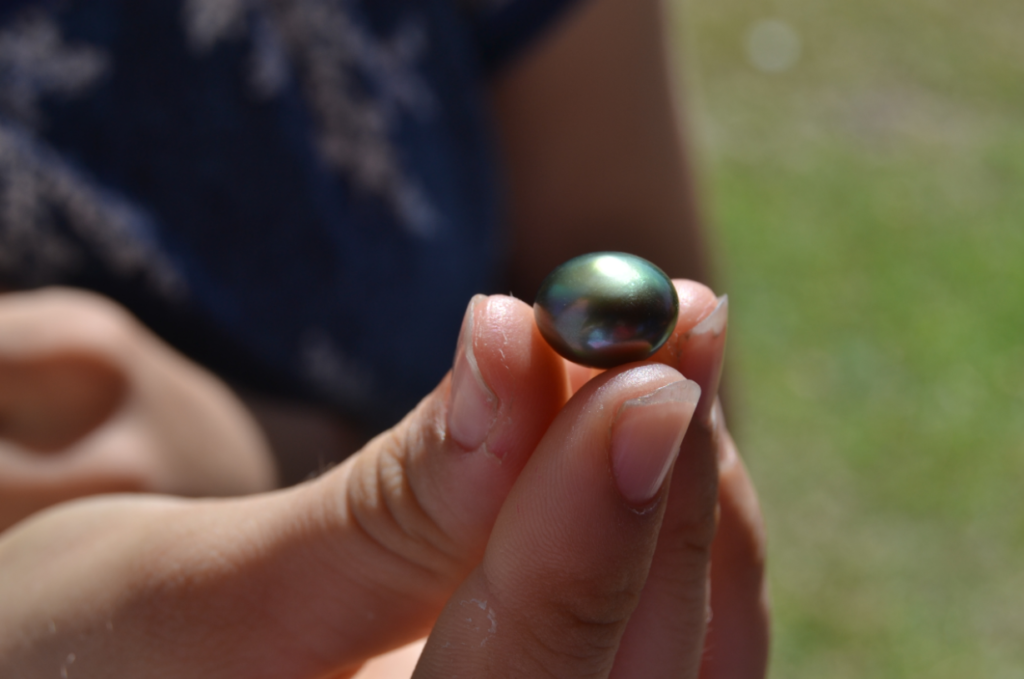
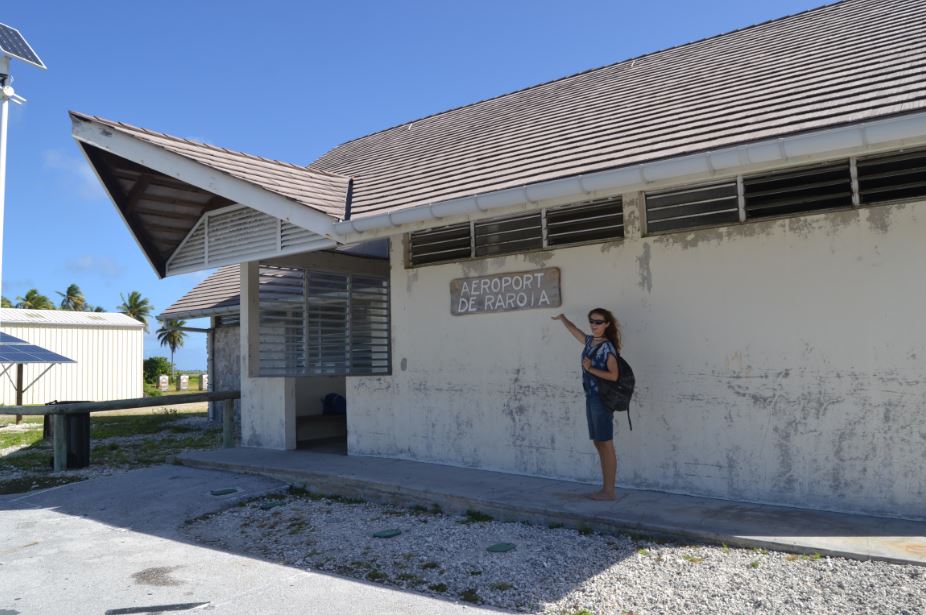
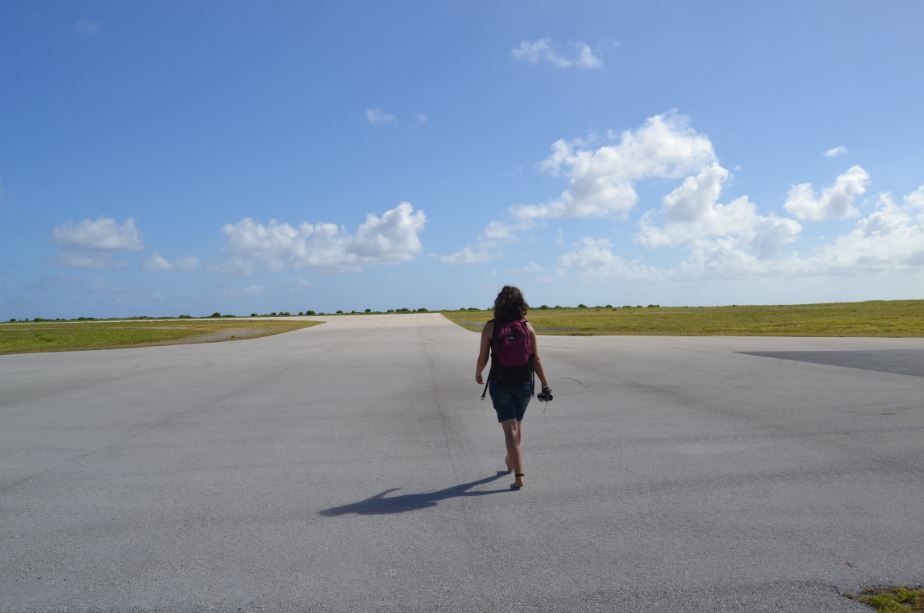


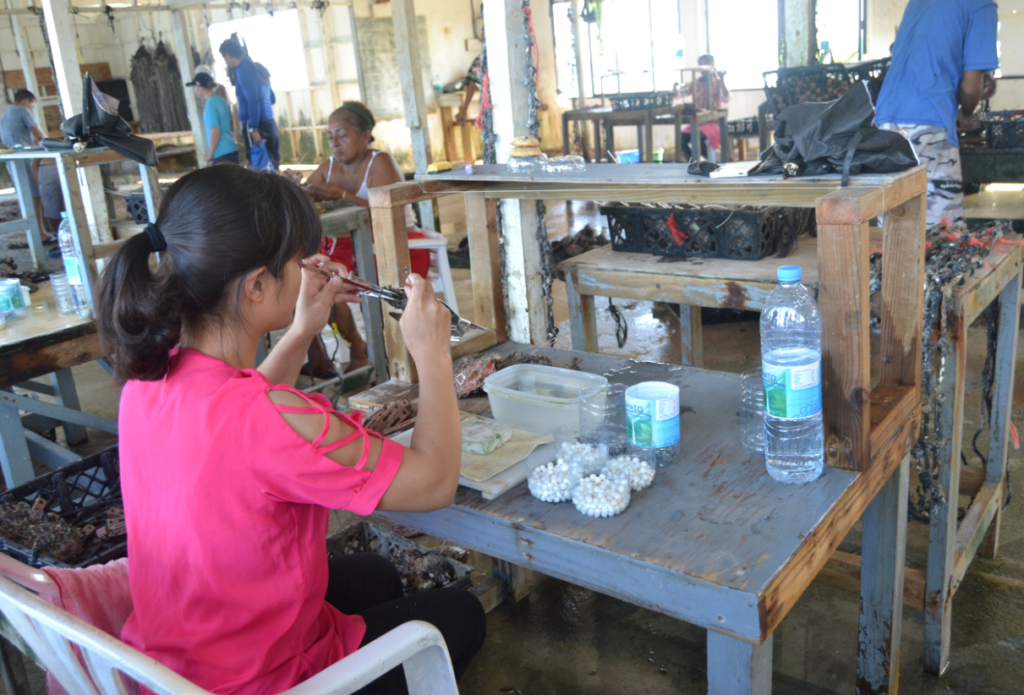
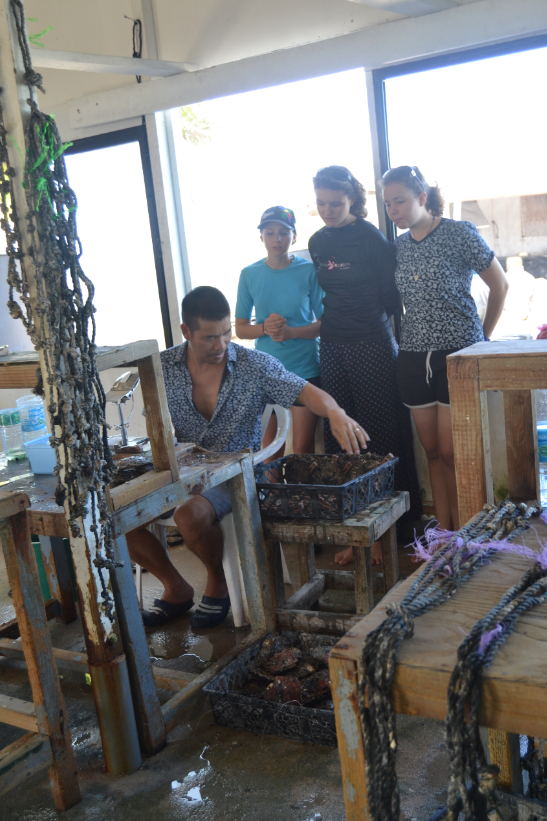
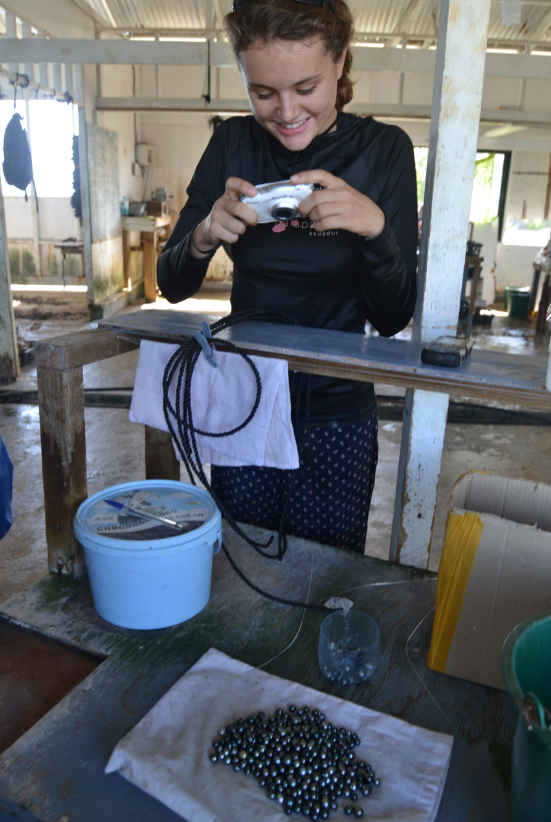
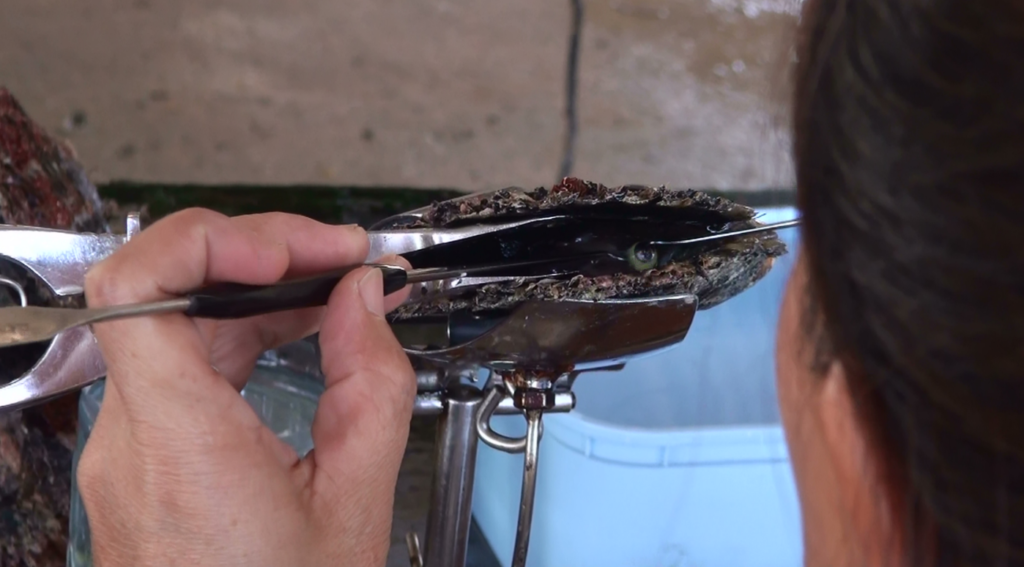
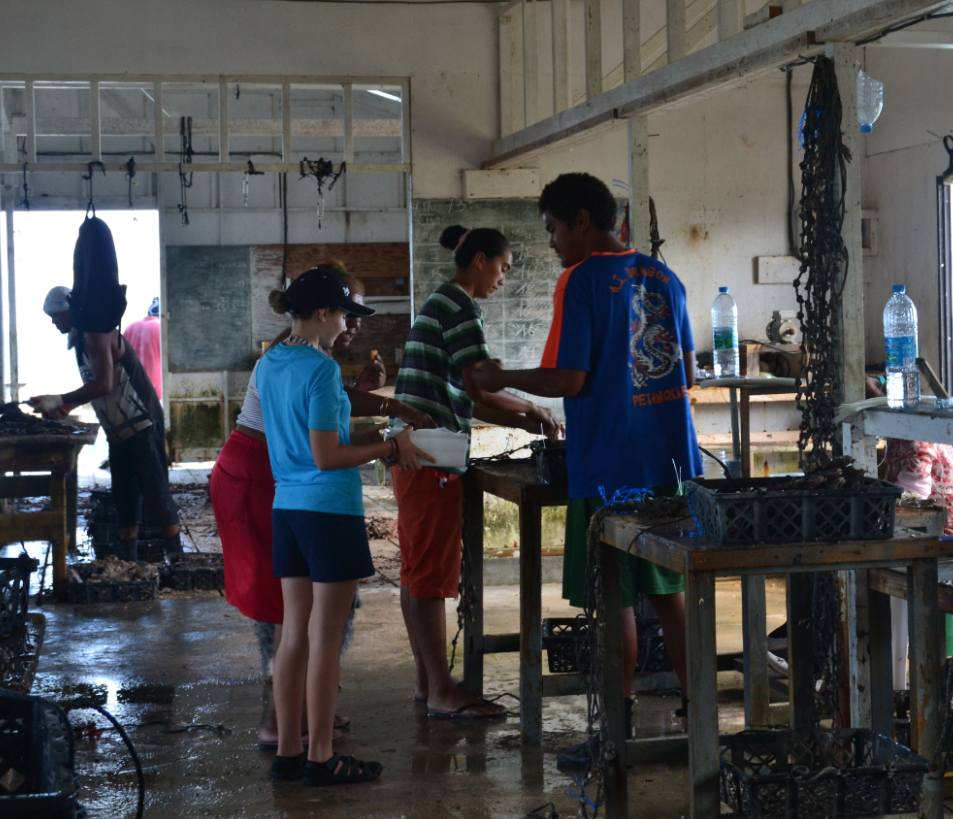
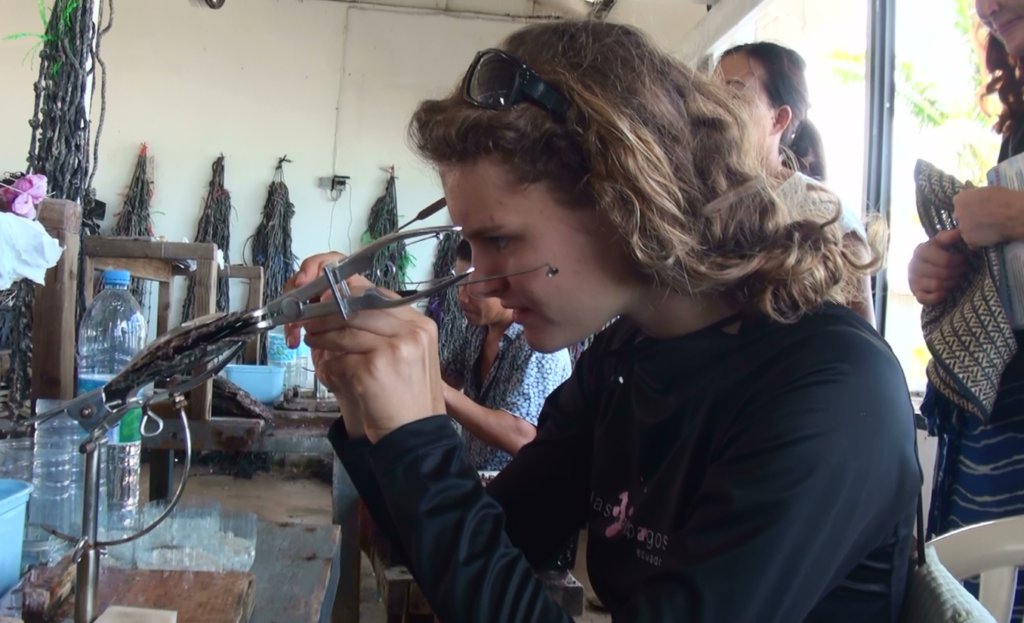
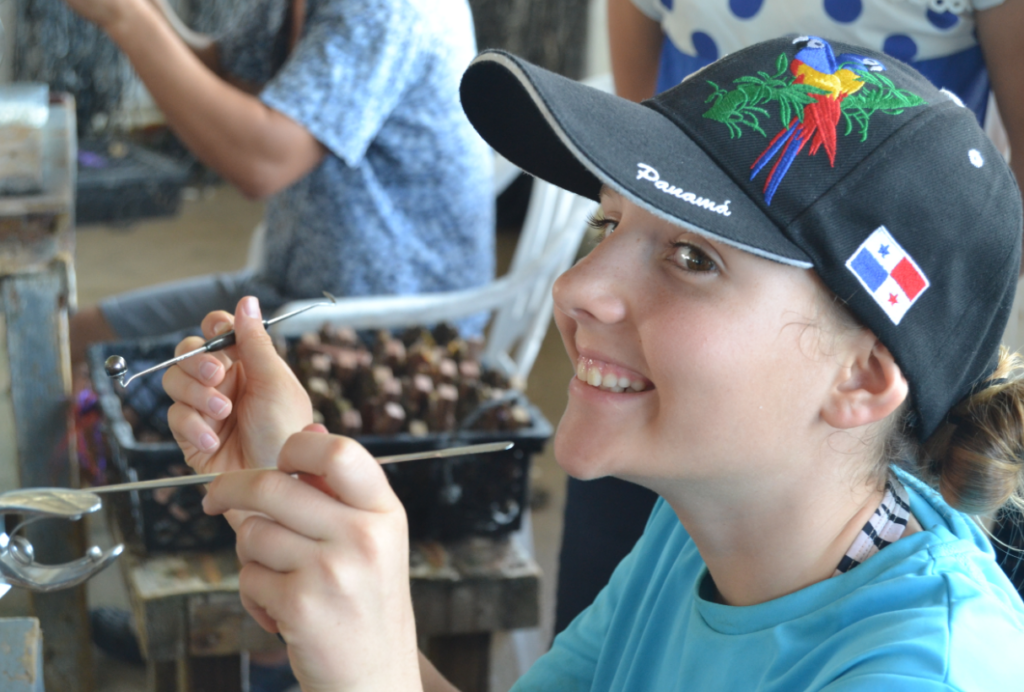
Recent Comments